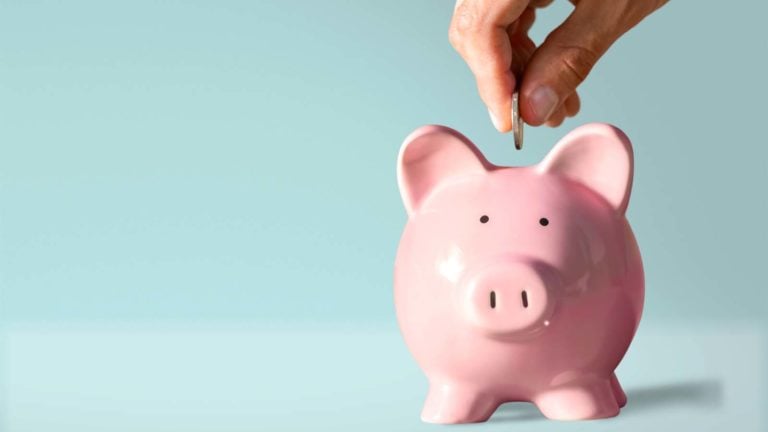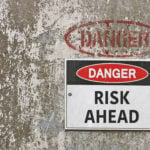
Source: Shutterstock
Editorial Note: InvestorPlace Beacon independently determines what we cover and recommend. We earn a commission from affiliate partners on many offers and links. However, these commissions do not affect our editors' opinions or evaluations. Click here to read our full advertiser disclosure.
Considering a high-yield savings account? Whether you’re a new saver or a seasoned investor, our comprehensive resource is designed to help you make informed decisions. Our comprehensive high-yield savings account guide will break down the basics, help you avoid unnecessary fees and maximize your potential returns.
What Are High-Yield Savings Accounts?
Think of a high-yield savings account like a supercharged traditional savings account. You can earn over 12 times the amount earned in a regular savings account, according to CNBC.
Your funds are placed in a secure high-yield savings account, and you earn compounded interest. To best understand how high-yield savings accounts work, familiarize yourself with the terms below.
Terms to Know
| Simple interest | Simple interest is only based on the interest you earn within one year on your initial deposit. |
| Compounded Interest | Compounded interest is the interest you earn on your initial deposit and the interest it earns within one year. Think of it almost like double dipping on your earnings. |
| Annual Percentage Yield (APY) | APY is the percentage rate of return on your investment within one year, which includes compounded interest. This is usually the percent advertised for high-yield savings accounts. |
According to the most recent Federal National Rates report, the national average APY on traditional savings accounts is just 0.46%. The best high-yield savings accounts usually offer between 4% to 5%.
The average inflation rate is predicted to drop to 3.3% for 2024, according to the Federal Planning Bureau. With lower inflation, a high-yield savings account will not only help you leverage against inflation, but also help you bulk up your savings.
Knowing this, you may be wondering why everyone doesn’t have a high-yield savings account. Like any savings vehicle, a high-yield savings account might be better for some people than for others
Who Should Have a High-Yield Savings Account?
Those looking for a low-risk, moderate-return investment vehicle will likely benefit from a high-yield savings account. The rates aren’t quite as high as other investments, but they will diversify your portfolio and hedge against inflation.
Expert Tip:
“If you’re looking for a high rate on a cash equivalent asset, you might also want to consider a money market fund or a CD, in addition to the high-yield savings account.”
— Barbara O’Neill, Ph.D., CFP®, AFC®, CRPC®, Owner and CEO of Money Talk
If you’re looking for high-risk, high reward investments, consider stocks, real estate investment trusts (REITs) or high-yield bonds instead. It’s in your best interest to speak to a financial advisor before choosing a riskier investment.
The Best Candidates for a High-Yield Savings Account Should:
- Want low-risk with moderate returns
- Be able to retain a minimum deposit
- Want to hedge against inflation
- Be open to paying potential fees
Some high-yield savings accounts also require a minimum deposit, maintenance fees and have limited withdrawals. It’s important to research these features before opening an account.
How to Find the Best High-Yield Savings Account
The first step to finding the best high-yield savings account is choosing a reputable banking institution. Make sure they’re FDIC or NCUA insured. Without this insurance, your funds won’t be protected if the bank or credit union fails.
The FDIC has a BankFind Suite database that can help you confirm if your bank has FDIC insurance. To view a list of all insured credit unions, visit the NCUA agency website.
You also shouldn’t just choose the first bank or credit union you find. O’Neill recommends comparing several to make a well informed decision.
“It would be a good idea to compare at least three different high-yield savings accounts from three different institutions. You’re probably going to get the best yield at an online bank.”
Once you choose a bank, you’ll need to compare four important features of high-yield savings accounts.
- Interest rate
- Withdrawal access
- Minimum account requirements
- Potential fees
Interest Rate
The interest rate, or APY, is the most important feature when shopping for a high-yield savings account. The APY determines how quickly your funds will grow. Anything above 4% is considered a fairly good rate.
Rates for high-yield savings accounts are variable, meaning they can fluctuate at any time. Choose a bank that has a history of high steady rates to avoid the likelihood of an unexpected rate drop.
O’Neill suggests opening an account sooner rather than later.
“There are predictions that the Federal Reserve is going to lower interest rates in 2024. Most people want to earn high-yields now before they potentially do down,” O’Neill told InvestorPlace.
Below are the current rates for high-yield savings accounts.
If you need help determining how much you’d save by opening a high-yield savings account, reach out to a financial advisor. They can help you with a rough estimate with variable rates in mind.
Withdrawal Access
Some high-yield savings accounts limit how many withdrawals or transfers you can make each month. The limit is usually six withdrawals each month. If easy access is important to you, make sure to clarify how often you can tap into your funds without penalty.
Another feature to look for with a high-yield savings account is an ATM card. Some banks include them for free, which makes fund management much easier.
Minimum Account Requirements
In some cases, you need a minimum initial deposit, and a minimum balance to maximize your APY.
For example, with Citibank, you need at least $100 to open an account, and a balance of at least $5,000 to earn 5.05% APY.
Let’s say you failed to read the fine print, and opened a Citibank high-yield savings account with a $4,000 deposit, and expected to earn the 5.05% APY. You won’t. At least, not until you deposit another $1,000.
Make sure to confirm the minimum account requirements for the maximum APY to avoid a let down on your savings goals.
Consider Potential Fees
Your high-yields savings account can be subject to a number of fees. Ask your bank if your account is subject to any of the fees below to avoid unexpected charges.
- Monthly maintenance fee
- Some banks charge a monthly maintenance fee, which is deducted from your balance. Luckily, it’s fairly easy to find a high-yield savings account without a maintenance fee.
- Minimum balance requirements fee
- You could be charged a fee or have your APY lowered if your balance drops below the minimum.
- Excessive withdrawal fees
- You could face a fee if you surpass your monthly withdrawal limit.
Sources:
Federal Deposit Insurance Corporation. (2024, January 16). National Rates and Rate Caps. Retrieved from https://www.fdic.gov/resources/bankers/national-rates/index.html
Gravier, E. (2024, January 11). High-Yield Savings Account Rates Are Dropping, but They Can Still Earn You Over 12X More Money Than the National Average. Retrieved from https://www.cnbc.com/select/traditional-savings-accounts-vs-high-yield-savings-accounts/
Federal Planning Bureau. (2024, January 9). Consumer Price Index – Inflation Forecasts. Retrieved from https://www.plan.be/databases/17-en-consumer_price_index_inflation_forecasts



